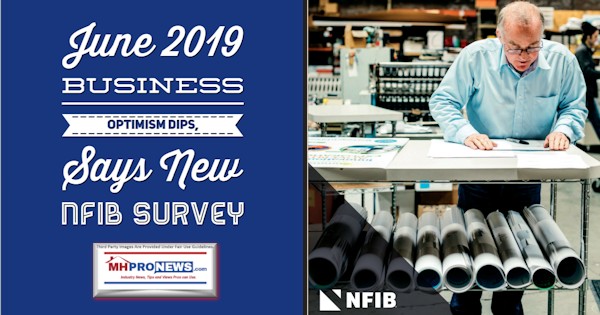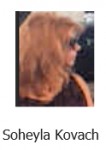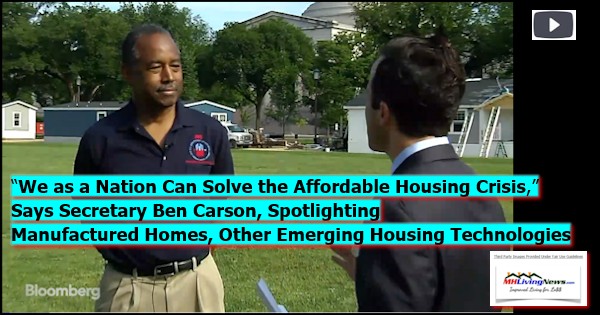
In a release to MHProNews, the National Federation of Independent Businesses (NFIB) reports that business optimism, while still high, has taken a dip. NFIB, per sources there, has hundreds of manufactured home industry companies as members, among the roughly 325,000 companies that comprise the trade group.
For those not familiar with the organization, this video of theirs published about a year ago has had over 12 million view. The group was one of several supporting the historic Tax Cuts and Jobs Act of 2017.
Here is the NFIB June 2019 statement.

WASHINGTON, D.C. (July 9, 2019) — America’s small business owners’ optimism took a modest downturn in June, according to the NFIB Small Business Optimism Index, slipping 1.7 points to 103.3. While optimism remains at historically high levels, the June figure reverses the gain posted in May, with six components falling, three improving, and one unchanged. The Uncertainty Index rose substantially, increasing seven points to the highest level since March 2017.
“Last month, small business owners curbed spending, sales expectations and profits both fell, and the outlook for expansion dampened. When you add difficulty finding qualified workers and harmful state level laws and regulations, you’re left with a volatile mix where uncertainty has increased to levels not seen in more than two years,” said NFIB President and CEO Juanita D. Duggan.
Both capital spending plans and reports of actual spending fell in June, reversing last month’s gains. The inventory component strengthened in June with owners saying existing inventory stocks were lean and planning to add to them. Sales and earnings trends softened, while expected credit conditions remained favorable. More owners expect credit conditions to tighten rather than ease by a two-to-one margin, with most expecting no change.
“As expectations for sales gains and the general business environment faded, uncertainty levels increased,” said NFIB Chief Economist William Dunkelberg. “Still, job openings and plans to create jobs remain historically very strong, and while it’s not as ‘hot’ as May, Main Street is still running strong.”
Twenty-six percent of owners plan capital outlays in the next few months, down four points, and an indication there is more reluctance to make major spending commitments when the future becomes less certain. Fifty-four percent reported capital outlays, down 10 points. Of those making expenditures, 40 percent reported spending on new equipment (down four points), 22 percent acquired vehicles (down seven points), and 12 percent improved or expanded facilities (down seven points).
The net percent of owners reporting inventory increases fell two points to a net zero percent, indicating no further building in inventory stocks in June. The net percent of owners viewing current inventory stocks as “too low” rose four points to a net zero percent, overall balance. Major imbalances reported in May have been resolved in most industries with the exception of manufacturing (18 percent too large, five percent too low) and agriculture (eight percent too large, 14 percent too low). The net percent of owners planning to expand inventory holdings did increase one point to a net three percent, a solid number.
A net seven percent of all owners (seasonally adjusted) reported higher nominal sales in the past three months, down two percentage points but a very solid reading. The net percent of owners expecting higher real sales volumes fell six points to a net 17 percent of owners. Excluding the government shutdown earlier this year, this is the weakest reading since September 2017.
“Contextually, owners expecting higher real sales volumes averaged a net negative three percent in the 12 months leading up to November 2016, making the current reading look relatively good, but not as good as the 31 percent reading in May of last year,” said Dunkelberg. “The economy is still advancing at a solid pace, but it is expected to be a slower pace than the first quarter.”
The frequency of reports of positive profit trends slipped six points to a net negative seven percent reporting quarter on quarter profit improvements. Twenty-seven percent of those reporting weaker profits blamed sales (down three points), 12 percent blamed labor costs (up five points), 11 percent cited materials costs, and nine percent cited lower selling prices (down two points).
Three percent of owners reported that all their borrowing needs were not satisfied, unchanged and historically very low. Twenty-nine percent reported all credit needs met (down five points) and 55 percent said they were not interested in a loan, up one point. A record low two percent reported their last loan was harder to get than the previous one. Two percent reported that financing was their top business problem (unchanged) compared to 21 percent citing the availability of qualified labor, 18 percent citing taxes, 13 percent regulations and red tape.
As reported in the June NFIB Jobs Report, small business owners added a net addition of 0.21 workers per firm, with 21 percent citing the difficulty of finding qualified workers as their Single Most Important Business Problem. Fifty-eight percent of owners reported hiring or trying to hire employees, down four points from last month, but 50 percent reported few or no qualified applicants for the positions they were trying to fill.
About the Small Business Economic Trends
The NFIB Research Center has collected Small Business Economic Trends data with quarterly surveys since the 4th quarter of 1973 and monthly surveys since 1986. Survey respondents are drawn from a random sample of NFIB’s membership. The report is released on the second Tuesday of each month. This survey was conducted in June 2019. For more information about NFIB, please visit NFIB.com.
###

Markets remain near historic highs. Unemployment is hovering near historic lows. See the related reports, further below. That’s “News through the lens of manufactured homes, and factory-built housing” © where “We Provide, You Decide.” © ## (News, analysis, and commentary.)

Soheyla is a managing member of LifeStyle Factory Homes, LLC, the parent company to MHProNews, and MHLivingNews.com.
Connect with us on LinkedIn here and here.
Related Reports:
Click the image/text box below to access relevant, related information.
5 Fastest Growing Suburbs, But Housing Report Signals Shift, New Woes

Senator Kamala Harris, Amazon, PreFabs, and Manufactured Housing – “ForgetAboutIt…”
President Trump Mulls Federal Action Intervening on Homeless Crisis in U.S. Cities
MHARR Cautions Congress on Two Unnecessary And Damaging Manufactured Home Bills | Manufactured Housing Association Regulatory Reform
Washington, D.C., July 1, 2019 – The Manufactured Housing Association for Regulatory Reform (MHARR) in a June 26, 2019 communication to both houses of Congress (copies attached), has called on legislators to take no action on pending proposed bills that are at best unnecessary and, at worst, harmful and damaging to both the mainstream HUD Code manufactured housing industry and the lower and moderate-income American families that rely on those homes for affordable homeownership.
White House Announces Council on Eliminating Regulatory Barriers To Affordable Housing | Manufactured Housing Association Regulatory Reform
MHARR participated in a conference call on June 25, 2019, conducted by the U.S. Department of Housing and Urban Development (HUD), during which White House officials announced the impending issuance of an Executive Order (EO) to create a “White House Council on Eliminating Regulatory Barriers to Affordable Housing.”

























